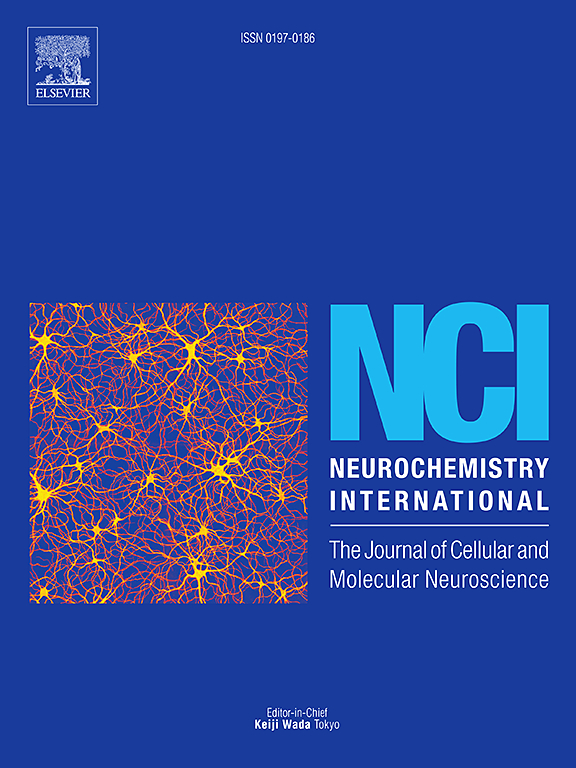Sp4/HD11 and Sp1/HAT-p300 complexes induce apoptotic cell death in CuCl2-treated neurons by modulating histone acetylation on BCL-W and BAX promoters
IF 4
3区 医学
Q2 BIOCHEMISTRY & MOLECULAR BIOLOGY
引用次数: 0
Abstract
Copper is a metal physiologically present in the brain that becomes neurotoxic at high concentrations; on the other hand, pharmacological inhibition of Histone Deacetylases (HDs) or of Histone Acetyltransferases (HATs) reduce neuronal death caused by several neurotoxicants. Herein, we found that CuCl2 (300 μM in SH-SY5Y cells or 100 μM in cortical neurons) determined apoptotic cell death, that was counteracted by the class IV HDs inhibitor Mocetinostat (MOCE) and by the HAT-p300 inhibitor C646, but not by the class I and II HDs inhibitors. Interestingly, HD11 and HAT-p300 protein levels increased after both 12 and 24 h of CuCl2 exposure and their silencing partially limited CuCl2-neurodetrimental effect. Furthermore, in CuCl2-treated cells the transcriptional factor Sp4 co-localized with HD11 on the promoter of anti-apoptotic gene BCL-W, determining histone H3 hypo-acetylation, a marker of gene repression. Contrarily, Sp1 co-localized with HAT-p300 on the pro-apoptotic gene BAX, determining histone H4 hyper-acetylation, a hallmark of transcriptional activation. In addition, siRNA against Sp4 prevented HD11 binding on BCL-W promoter and its consequent down-regulation, whereas Sp1 knocking-down, by reducing HAT-p300 interaction on BAX gene promoter counteracted its up-regulation. Importantly, while the single knocking-down of Sp1, Sp4, HD11 and HAT-p300 partially mitigated CuCl2-induced cell death, the double-transfection of siRNAs for Sp1 and Sp4, or for HD11 and HAT-p300, completely reverted the neurotoxic effect of CuCl2. Collectively, we found that CuCl2-induced neuronal apoptosis is determined by the binding of Sp1/HAT-p300 and of Sp4/HD11 transcriptional complexes on the BAX and BCL-W gene, respectively, unraveling a new pathway involved in Copper-induced neurotoxicity.

Sp4/HD11和Sp1/HAT-p300复合物通过调节BCL-W和BAX启动子上的组蛋白乙酰化诱导cucl2处理的神经元凋亡细胞死亡
铜是一种生理上存在于大脑中的金属,高浓度时具有神经毒性;另一方面,药物抑制组蛋白去乙酰化酶(hd)或组蛋白乙酰转移酶(HATs)可减少几种神经毒物引起的神经元死亡。本文中,我们发现CuCl2 (SH-SY5Y细胞中300 μM或皮质神经元中100 μM)决定凋亡细胞的死亡,这被IV类hd抑制剂moceinostat (MOCE)和HAT-p300抑制剂C646抵消,但不被I类和II类hd抑制剂抵消。有趣的是,在CuCl2暴露12和24小时后,HD11和HAT-p300蛋白水平升高,它们的沉默部分限制了CuCl2对神经的有害影响。此外,在cucl2处理的细胞中,转录因子Sp4与HD11共定位在抗凋亡基因BCL-W的启动子上,决定了组蛋白H3低乙酰化,这是基因抑制的标志。相反,Sp1与HAT-p300在促凋亡基因BAX上共定位,决定组蛋白H4超乙酰化,这是转录激活的标志。此外,抑制Sp4的siRNA抑制了HD11与BCL-W启动子的结合及其随后的下调,而Sp1敲低通过减少HAT-p300与BAX基因启动子的相互作用抵消了其上调。重要的是,虽然单一敲除Sp1、Sp4、HD11和HAT-p300部分减轻了CuCl2诱导的细胞死亡,但双重转染Sp1和Sp4,或HD11和HAT-p300的sirna,完全恢复了CuCl2的神经毒性作用。总的来说,我们发现cucl2诱导的神经元凋亡是由Sp1/HAT-p300和Sp4/HD11转录复合物分别结合在BAX和BCL-W基因上决定的,揭示了铜诱导的神经毒性的新途径。
本文章由计算机程序翻译,如有差异,请以英文原文为准。
求助全文
约1分钟内获得全文
求助全文
来源期刊

Neurochemistry international
医学-神经科学
CiteScore
8.40
自引率
2.40%
发文量
128
审稿时长
37 days
期刊介绍:
Neurochemistry International is devoted to the rapid publication of outstanding original articles and timely reviews in neurochemistry. Manuscripts on a broad range of topics will be considered, including molecular and cellular neurochemistry, neuropharmacology and genetic aspects of CNS function, neuroimmunology, metabolism as well as the neurochemistry of neurological and psychiatric disorders of the CNS.
 求助内容:
求助内容: 应助结果提醒方式:
应助结果提醒方式:


